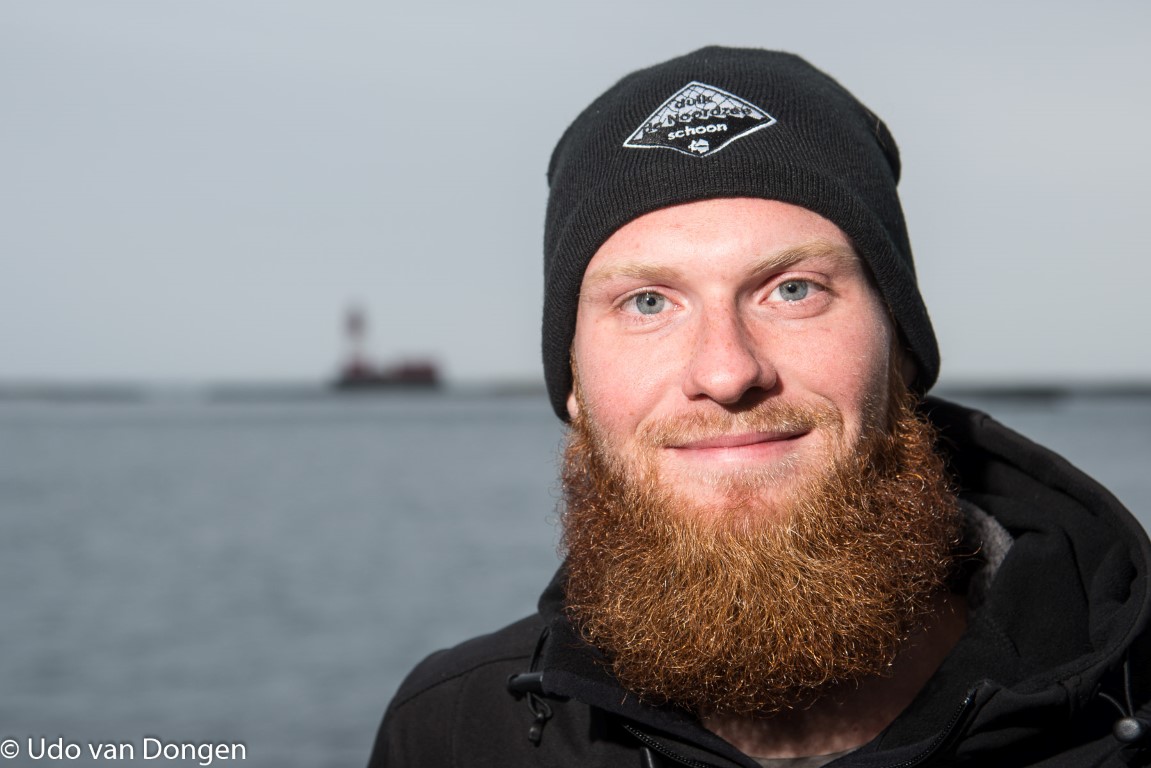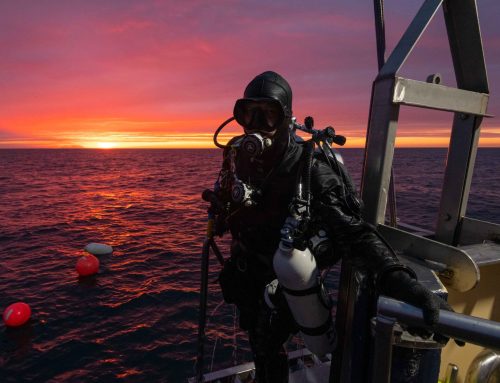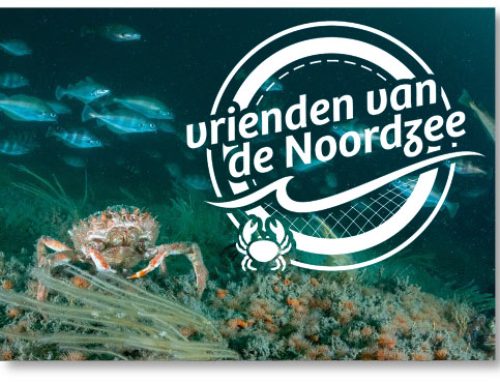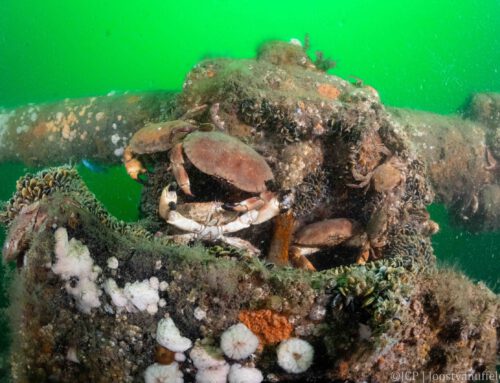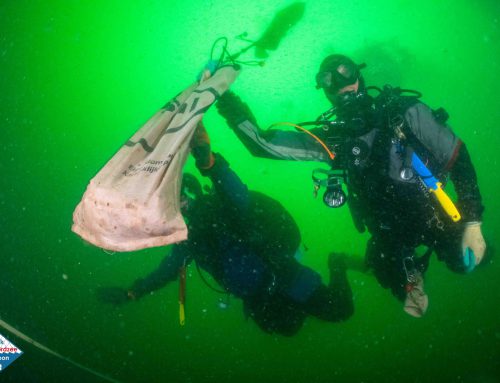A blog by Erik Wurtz
Places are rare, where nature still rules. We travelled many, many nautical miles to see one of these spectacular sceneries off the English coast: The Farne islands. On the morning of the 6th day of our expedition, a group of small islands appears. From the distance they are dominated by lighthouses, preventing ships hitting the shore of these rocky pinnacles. But, appearances are deceptive. Getting closer it becomes obvious who really rules this group of islands. Thousands of seabirds find shelter and breeding grounds on the steep cliffs. Puffins, guillemots, razorbills and gannets pass over our expedition vessel heading to their resting and nesting sites. Many of them with beaks filled with small fish that they caught offshore. No doubt they have hungry mouths to feed.
Before exploring the underwater landscape of the Farne islands, we stop at a nearby position for a wreck-dive. The side scan sonar unravels big structures approximately 100m long. Kept secret by the ocean’s waves. The first team, tasked with laying out the guideline is quite optimistic and takes three reels, each measuring 50m in length, to the 30m deep wreck. My team partner and I enter the water and descend down the line through water loaded with particles. To our surprise, the visibility at the bottom improves significantly and creates a special atmosphere in the depth of the North Sea. The light has almost faded, and what’s left is a gloom of a deep dark green. The beams of our lights cut through the intense colour of the sea and shine on the huge structures of the wreck. We pass steel constructions hardly recognisable as part of a ship anymore. Still quite easy to identify: the kettles and engines of the big ship. We continue following the guidelines and fill a bag with ghost nets that my buddy cuts free. We are almost at the end of our time that we can spend at depth and we face a decision. Which way of the guideline is the shortest back to the line that we have to use for our ascent? We also have to carry the heavy bag with ropes and nets. Quite a job on 30m depth and currents picking up.
My team partner seems to be convinced, that following the third and last laid guideline is the shortest way back to the anchor. Counterintuitive to me, but as limited as communication is underwater: he convinced me. Arriving at the anchor, we clip the bag with recovered nets to the line. One more look around and we leave the gloomy scenery and ascend to the surface. The second dive is planned in the direct vicinity of the shore of the Farne islands. Our vessel cuts through swarms of guillemots. These black and white birds are considered the Penguins of the northern hemisphere. The only difference to their relatives from the south: they still can fly. Or try to.
In teams of three we start our second dive and enter a forest of large algae growing on the rocky substrate. The big leave-like structures of the Laminaria sp. slowly wave in the water, as we drift along carried by a gentle current. Through the eyes of a marine biologist the subtidal substrate of rocky shores is a highly competitive habitat. We observe the fight for light between encrusting red algae, covering the rocks, and small Laminaria specimens longing to grow high to catch their share of the sun’s rays. The overhangs, where light is limited and algae have a hard time to grow, soft corals and anemones take over and create forests of their own. The grey seals that relaxed at the shore sadly didn’t join us for the dive. At least, we haven’t seen them. But, who knows what happened behind our backs?

